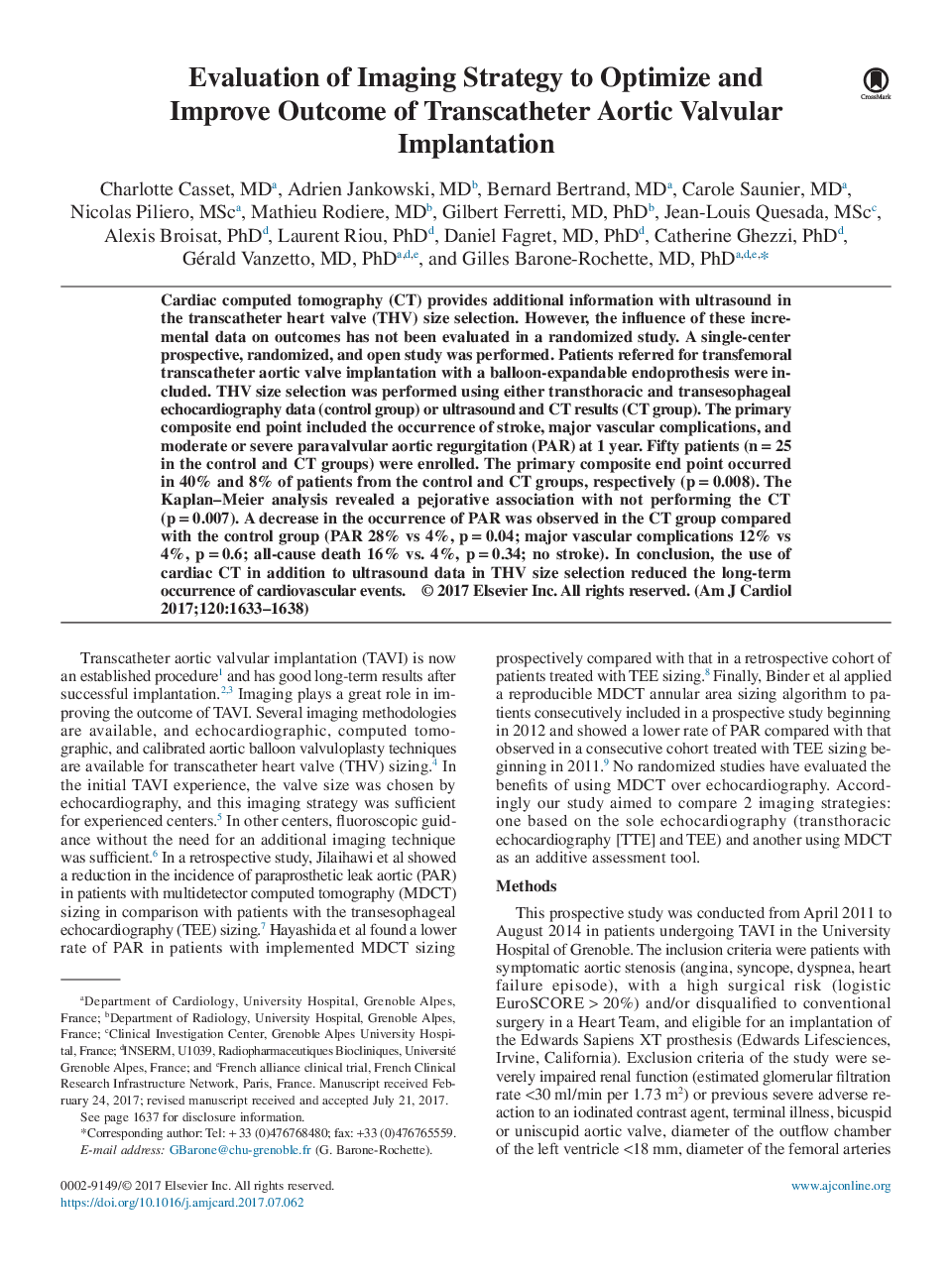| Article ID | Journal | Published Year | Pages | File Type |
|---|---|---|---|---|
| 8651702 | The American Journal of Cardiology | 2017 | 6 Pages |
Abstract
Cardiac computed tomography (CT) provides additional information with ultrasound in the transcatheter heart valve (THV) size selection. However, the influence of these incremental data on outcomes has not been evaluated in a randomized study. A single-center prospective, randomized, and open study was performed. Patients referred for transfemoral transcatheter aortic valve implantation with a balloon-expandable endoprothesis were included. THV size selection was performed using either transthoracic and transesophageal echocardiography data (control group) or ultrasound and CT results (CT group). The primary composite end point included the occurrence of stroke, major vascular complications, and moderate or severe paravalvular aortic regurgitation (PAR) at 1 year. Fifty patients (nâ=â25 in the control and CT groups) were enrolled. The primary composite end point occurred in 40% and 8% of patients from the control and CT groups, respectively (pâ=â0.008). The Kaplan-Meier analysis revealed a pejorative association with not performing the CT (pâ=â0.007). A decrease in the occurrence of PAR was observed in the CT group compared with the control group (PAR 28% vs 4%, pâ=â0.04; major vascular complications 12% vs 4%, pâ=â0.6; all-cause death 16% vs. 4%, pâ=â0.34; no stroke). In conclusion, the use of cardiac CT in addition to ultrasound data in THV size selection reduced the long-term occurrence of cardiovascular events.
Related Topics
Health Sciences
Medicine and Dentistry
Cardiology and Cardiovascular Medicine
Authors
Charlotte MD, Adrien MD, Bernard MD, Carole MD, Nicolas MSc, Mathieu MD, Gilbert MD, PhD, Jean-Louis MSc, Alexis PhD, Laurent PhD, Daniel MD, PhD, Catherine PhD, Gérald MD, PhD, Gilles MD, PhD,
